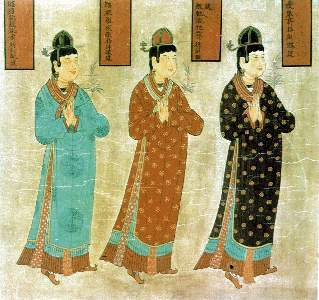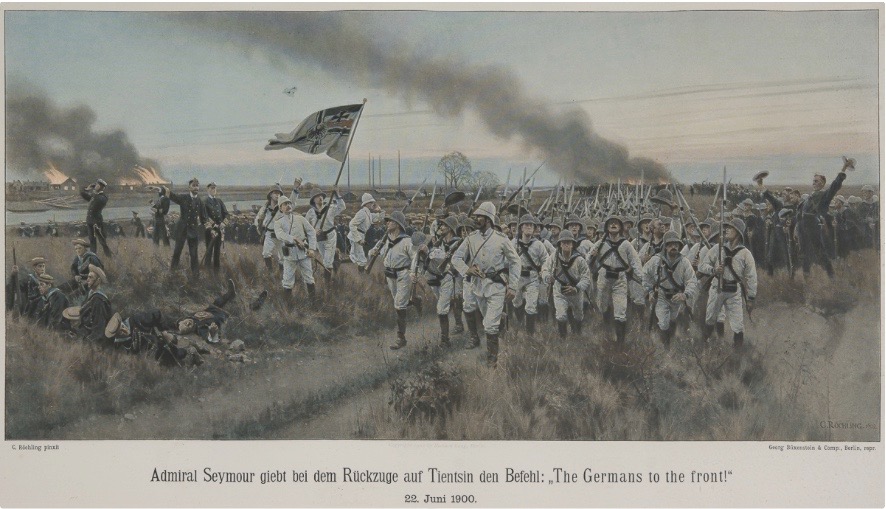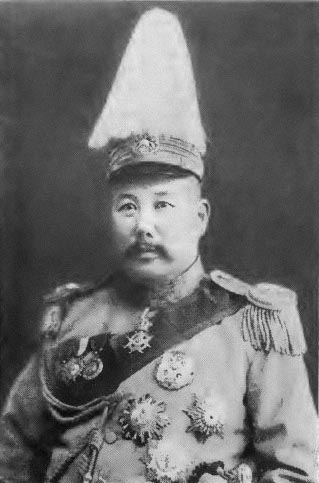|
Dongxiang People
The Dongxiang people (autonym: '' Sarta'' or ''Santa'' (撒爾塔); , Xiao'erjing: دْوݣسِيْاݣذُ) are Mongolic people and one of 56 ethnic groups officially recognized by the People's Republic of China China, officially the People's Republic of China (PRC), is a country in East Asia. It is the world's List of countries and dependencies by population, most populous country, with a Population of China, population exceeding 1.4 billion, sli .... Most of the Dongxiang live in the Linxia Hui Autonomous Prefecture and surrounding areas of Gansu, Gansu Province in Northwestern China, half of them in Dongxiang Autonomous County, which is part of Linxia. According to the 2010 census, their population numbers 621,500, although research has found that the number is inflated due to Hui people, Hui identifying themselves as Dongxiang for the census, in order to benefit from minority policies. Origin and development The Dongxiang are closely related to other Mongolic p ... [...More Info...] [...Related Items...] OR: [Wikipedia] [Google] [Baidu] |
Dangxiang
The Tangut people ( Tangut: , ''mjɨ nja̱'' or , ''mji dzjwo''; ; ; mn, Тангуд) were a Tibeto-Burman tribal union that founded and inhabited the Western Xia dynasty. The group initially lived under Tuyuhun authority, but later submitted to the Tang dynasty, prior to their establishment of the Western Xia. They spoke the Tangut language, which was previously believed to be one of the Qiangic languages or Yi languages that belong to the Tibeto-Burman family. Phylogenetic and historical linguistic accounts, however, reveal that Tangut belonged to the Gyalrongic languages. Language The Tangut language, otherwise known as ''Fan'', belongs to the Tibeto-Burman branch of the Sino-Tibetan language family. Like many other Sino-Tibetan languages, it is a tonal language with predominantly mono-syllabic roots, but it shares certain grammatical traits central to the Tibeto-Burman branch. It is still debated as to whether Tangut belongs to the Yi or Qiangic subdivision of ... [...More Info...] [...Related Items...] OR: [Wikipedia] [Google] [Baidu] |
Monguor People
The Monguor (; Tu: Mongghul), the Tu people (), the White Mongol or the Tsagaan Mongol, are Mongolic people and one of the 56 officially recognized ethnic groups in China. The "Tu" ethnic category was created in the 1950s. According to the 2000 census, the total population was 241,198, who mostly lived in the Qinghai and the Gansu provinces. The 2010 census gave their number as 289,565. The Monguor people speak the Monguor language, which belongs to the family of Mongolic languages but has been heavily influenced by both the local Chinese and Tibetan dialects. Today, nearly all Tu people also speak Chinese. Most are farmers and some keep livestock. Their culture and the social organizations have been influenced by Tibetan Buddhism, Confucianism, Taoism and local beliefs. A few Tu in Huzhu and Minhe are Christian, the result of on-going American and Korean missionary work in the area. Ethnic origins The ethnic history of the Monguor is contested. It has been variously sug ... [...More Info...] [...Related Items...] OR: [Wikipedia] [Google] [Baidu] |
Ma Biao (general)
Ma Biao (1885–1948) () was a Chinese Muslim Ma Clique General in the National Revolutionary Army, and served under Ma Bufang, the Governor of Qinghai. He was a member of Ma Bufang's family, Ma Biao was the eldest son of Ma Haiqing 馬海清, who was the sixth younger brother of Ma Haiyan, the grandfather of Ma Bufang. Life Boxer Rebellion Ma was too young to participate in the First Sino-Japanese War, in which he wanted to fight. He then joined the Kansu Braves, serving under Ma Haiyan, fought against the foreigners in the Boxer Rebellion at the Battle of Peking (1900) and helped guard the Imperial Court when it evacuated to Xi'an. Qinghai-Tibet war He was prominent in the Qinghai – Tibet War, a theater of the Sino-Tibetan War. He was sent by Ma Bufang to create an incident against the Tibetan army at a monastery at Yushu. This set off the Qinghai Tibet War. In 1931 Ma Biao became leader of the Yushu Defense Brigade. He was the second brigade commander while the first bri ... [...More Info...] [...Related Items...] OR: [Wikipedia] [Google] [Baidu] |
Zhengyangmen
Qianmen () is the colloquial name for Zhengyangmen (; Manchu:; Möllendorff:tob šun-i duka, literally meaning "Gate of the Zenith Sun"), a gate in Beijing's historic city wall. The gate is situated to the south of Tiananmen Square and once guarded the southern entry into the Inner City. Although much of Beijing's city walls were demolished, Zhengyangmen remains an important geographical marker of the city. The city's central north–south axis passes through Zhengyangmen's main gate. It was formerly named Lizhengmen (), meaning "beautiful portal". History Zhengyangmen was first built in 1419 during the Ming dynasty and once consisted of the gatehouse proper and an archery tower, which were connected by side walls and together with side gates, formed a large barbican. The gate guarded the direct entry into the imperial city. The city's first railway station, known as the Qianmen Station, was built just outside the gate. During the Boxer Rebellion of 1900 in the late Qing dyn ... [...More Info...] [...Related Items...] OR: [Wikipedia] [Google] [Baidu] |
Battle Of Langfang
The Battle of Langfang was a battle in the Seymour Expedition during the Boxer Rebellion, in June 1900, involving Chinese imperial troops, the Chinese Muslim Kansu Braves and Boxers ambushing and defeating the Eight-Nation Alliance expeditionary army on its way to Beijing, pushing the Alliance forces to retreat back to Tientsin (Tianjin). The Alliance force at Langfang consisted of Germans. Preceding clashes The Chinese Imperial Tenacious Army under General Nie Shicheng was waging a brutal campaign to suppress the Boxers under orders from Commander in Chief Ronglu. At the same time General Nie was fighting the Boxers (Militia United in Righteousness, ''Yihetuan''), the foreign Eight-Nation Alliance launched an invasion of China to reach the Legations at Beijing. The Imperial Court then decided to change its tack and halt the suppression campaign against the Boxers and fight the foreigners instead. There was too much bad blood between General Nie and the Boxers for them to cooperat ... [...More Info...] [...Related Items...] OR: [Wikipedia] [Google] [Baidu] |
Eight Nation Alliance
The Eight-Nation Alliance was a multinational military coalition that invaded northern China in 1900 with the stated aim of relieving the foreign legations in Beijing, then besieged by the popular Boxer militia, who were determined to remove foreign imperialism in China. The Allied forces consisted of about 45,000 troops from what have, in popular tradition, been called eight 'nations' but included several empires, so thus actually far more than 8 nations in our contemporary 21st century terms, comprising: the German Empire, the Empire of Japan, the Russian Empire, the British Empire, particularly including forces from its full and sub-continent domains of Australia which was not a discrete official alliance signatory and the Empire of India, France which continued with overseas possessions, the United States which as democracy has historically demurred its global reach as 'empire', Italy, a kingdom in this peirod, and the Empire of Austria-Hungary. Neither the Chinese nor t ... [...More Info...] [...Related Items...] OR: [Wikipedia] [Google] [Baidu] |
Boxer Rebellion
The Boxer Rebellion, also known as the Boxer Uprising, the Boxer Insurrection, or the Yihetuan Movement, was an anti-foreign, anti-colonial, and anti-Christian uprising in China between 1899 and 1901, towards the end of the Qing dynasty, by the Society of Righteous and Harmonious Fists (), known as the "Boxers" in English because many of its members had practised Chinese martial arts, which at the time were referred to as "Chinese boxing". After the Sino-Japanese War of 1895, villagers in North China feared the expansion of foreign spheres of influence and resented the extension of privileges to Christian missionaries, who used them to shield their followers. In 1898 Northern China experienced several natural disasters, including the Yellow River flooding and droughts, which Boxers blamed on foreign and Christian influence. Beginning in 1899, Boxers spread violence across Shandong and the North China Plain, destroying foreign property such as railroads and attacking or ... [...More Info...] [...Related Items...] OR: [Wikipedia] [Google] [Baidu] |
Ma Fulu
Ma Fulu ( Chinese: 马福禄, Pinyin: Mǎ Fúlù, Xiao'erjing: ; 1854 – 1900), a Chinese Muslim, was the son of General Ma Qianling and the brother of Ma Fucai, Ma Fushou and Ma Fuxiang. He was a middle born son. In 1880, Ma Fulu went to Beijing to take advanced military exams when he had an audience before the Emperor. He accidentally committed a faux pas since he did not know proper palace etiquette and subsequently served as a guard for the Emperor to make up for this incident. He studied at a martial arts hall and military school. In 1895, he served under general Dong Fuxiang, leading loyalist Chinese Muslims to crush a revolt by rebel Muslims in the Dungan revolt (1895–1896). His loyalist Muslim troops slaughtered and beheaded the rebel Muslims and his commanding officers received the heads of the rebels from Ma. In 1897, a military Jinshi degree was awarded to Ma Fulu. Ma was transferred along with his brother Ma Fuxiang and several cousins to serve as officers u ... [...More Info...] [...Related Items...] OR: [Wikipedia] [Google] [Baidu] |
A Dongxiang Muslim Elder With Long Beard, Other Muslims, Conversing With Christian Missionaries, Hezhou ( Linxia), Gansu, 1934
A, or a, is the first letter and the first vowel of the Latin alphabet, used in the modern English alphabet, the alphabets of other western European languages and others worldwide. Its name in English is ''a'' (pronounced ), plural ''aes''. It is similar in shape to the Ancient Greek letter alpha, from which it derives. The uppercase version consists of the two slanting sides of a triangle, crossed in the middle by a horizontal bar. The lowercase version can be written in two forms: the double-storey a and single-storey ɑ. The latter is commonly used in handwriting and fonts based on it, especially fonts intended to be read by children, and is also found in italic type. In English grammar, " a", and its variant " an", are indefinite articles. History The earliest certain ancestor of "A" is aleph (also written 'aleph), the first letter of the Phoenician alphabet, which consisted entirely of consonants (for that reason, it is also called an abjad to distinguish it fr ... [...More Info...] [...Related Items...] OR: [Wikipedia] [Google] [Baidu] |
Ma Fuxiang
Ma Fuxiang (, Xiao'erjing: , French romanization: Ma-Fou-hiang or Ma Fou-siang; 4 February 1876 – 19 August 1932) was a Chinese military and political leader spanning the Qing Dynasty through the early Republic of China and illustrated the power of family, the role of religious affiliations and the interaction of Inner Asian China and the national government of China. He was a prominent Muslim warlord in northwest China. Ma Fuxiang originally served under Dong Fuxiang, like other Ma Clique Muslim warlords such as Ma Anliang. Ma was born in Linxia, Gansu. He was named the military governor of Xining and then of Altay, in Qing times. He held a large number of military posts in the northwestern region after the founding of the republic. He was governor of Qinghai in 1912, Ningxia from 1912 to 1920, and Suiyuan from 1920 to 1925. Having turned to Chiang Kai-shek in 1928, he was made chairman (governor) of the government of Anhui in 1930. He was elected a member of the N ... [...More Info...] [...Related Items...] OR: [Wikipedia] [Google] [Baidu] |
Mongolian Language
Mongolian is the official language of Mongolia and both the most widely spoken and best-known member of the Mongolic language family. The number of speakers across all its dialects may be 5.2 million, including the vast majority of the residents of Mongolia and many of the ethnic Mongol residents of the Inner Mongolia Autonomous Region of the People's Republic of China.Estimate from Svantesson ''et al.'' (2005): 141. In Mongolia, Khalkha Mongolian is predominant, and is currently written in both Cyrillic and traditional Mongolian script. In Inner Mongolia, the language is dialectally more diverse and is written in the traditional Mongolian script. However, Mongols in both countries often use the Latin script for convenience on the Internet. In the discussion of grammar to follow, the variety of Mongolian treated is the standard written Khalkha formalized in the writing conventions and in grammar as taught in schools, but much of what is to be said is also valid for ve ... [...More Info...] [...Related Items...] OR: [Wikipedia] [Google] [Baidu] |
Han Chinese
The Han Chinese () or Han people (), are an East Asian ethnic group native to China. They constitute the world's largest ethnic group, making up about 18% of the global population and consisting of various subgroups speaking distinctive varieties of the Chinese language. The estimated 1.4 billion Han Chinese people, worldwide, are primarily concentrated in the People's Republic of China (including Mainland China, Hong Kong and Macau) where they make up about 92% of the total population. In the Republic of China (Taiwan), they make up about 97% of the population. People of Han Chinese descent also make up around 75% of the total population of Singapore. Originating from Northern China, the Han Chinese trace their cultural ancestry to the Huaxia, the confederation of agricultural tribes living along the Yellow River. This collective Neolithic confederation included agricultural tribes Hua and Xia, hence the name. They settled along the Central Plains around the middle a ... [...More Info...] [...Related Items...] OR: [Wikipedia] [Google] [Baidu] |







